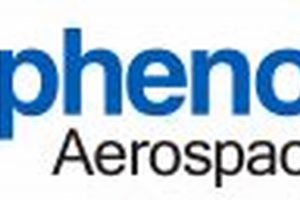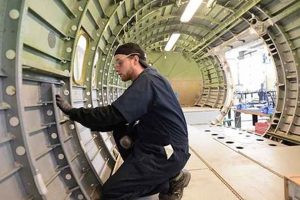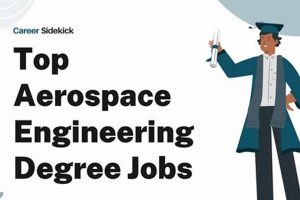Positions within the aeronautics industry requiring skilled application of gas tungsten arc welding are essential for fabricating and joining critical components. These roles involve creating high-quality welds on materials such as aluminum, stainless steel, and titanium, frequently used in aircraft and spacecraft construction. For example, a technician might weld hydraulic lines for an aircraft or fabricate a structural component for a satellite.
The significance of these specialized welding roles stems from their contribution to the safety and performance of flight vehicles. Strong, precise welds are crucial in ensuring the structural integrity of aircraft and spacecraft, directly impacting flight safety and mission success. Historically, the demand for these skills has grown in parallel with advancements in aviation and space exploration, reflecting the increasing complexity and material requirements of modern aerospace engineering.
The following sections will delve into the specific responsibilities, required qualifications, necessary skills, and typical working environments associated with these specialized positions, providing a comprehensive overview for those considering a career in this vital field.
Professional Guidance
The pursuit of excellence in specialized welding within the aerospace sector demands a dedicated approach to skill development and professional conduct. The following guidelines offer insights into maximizing opportunities and ensuring success in this demanding field.
Tip 1: Prioritize Certification: Obtaining certifications demonstrates competency and adherence to industry standards. Certifications from recognized bodies such as the American Welding Society (AWS) are highly valued by employers and can significantly enhance career prospects.
Tip 2: Master Material Expertise: A comprehensive understanding of the properties and welding characteristics of various aerospace alloys, including aluminum, titanium, and nickel-based alloys, is crucial. Invest time in studying material science and metallurgy to effectively address welding challenges.
Tip 3: Refine Welding Technique: Precision and consistency are paramount. Regularly practice gas tungsten arc welding techniques on representative materials to improve bead quality, minimize defects, and achieve optimal weld strength.
Tip 4: Understand Blueprints and Specifications: The ability to accurately interpret technical drawings, welding symbols, and quality control specifications is essential. Develop proficiency in reading and understanding engineering documentation to ensure compliance with project requirements.
Tip 5: Emphasize Safety Protocols: Adherence to safety regulations is non-negotiable. Prioritize the use of appropriate personal protective equipment (PPE) and follow established safety procedures to mitigate risks associated with welding operations.
Tip 6: Seek Continuous Improvement: The aerospace industry is constantly evolving. Engage in ongoing professional development activities, such as attending workshops, conferences, and online courses, to stay abreast of the latest technologies and best practices.
Tip 7: Cultivate Professional Relationships: Networking with experienced welders, engineers, and industry professionals can provide valuable mentorship opportunities and access to career advancement possibilities. Attend industry events and participate in professional organizations to expand professional connections.
By focusing on certification, material expertise, technique refinement, blueprint comprehension, safety adherence, continuous learning, and professional networking, individuals can establish a strong foundation for a successful and rewarding career.
The subsequent sections will address specific career pathways, salary expectations, and emerging trends to provide a holistic understanding of the opportunities within the field.
1. Critical Component Fabrication
The relationship between critical component fabrication and specialized welding roles within the aeronautics sector is one of direct cause and effect. Gas tungsten arc welding is frequently the method of choice in the creation of parts essential to aircraft and spacecraft functionality. Without skilled application of this process, the fabrication of many aerospace components, such as engine parts, structural supports, and hydraulic systems, would be impossible. Therefore, competence in this particular welding process directly enables the production of parts upon which flight safety depends. Examples of this include the welding of turbine blades, which require exceptional precision, and the creation of fuel tanks, where structural integrity is paramount.
The importance of critical component fabrication as a function of these welding roles is underscored by the stringent quality control measures imposed on the industry. Defects in welds, even microscopic ones, can lead to catastrophic failure in flight. Consequently, welders specializing in this area are not merely joining pieces of metal; they are guaranteeing the structural integrity and operational reliability of the finished product. The welding of pressure vessels for life support systems on spacecraft exemplifies this point, as a failure in such a component could have fatal consequences.
In summary, the connection between critical component fabrication and specialized welding is undeniable and vital to the aerospace industry. Skilled welders are not simply performing a task; they are playing a crucial role in ensuring the safety and success of aerospace endeavors. The challenges faced within the field, such as working with exotic materials and meeting exceptionally strict tolerances, highlight the need for continuous training and professional development to maintain the high standards required.
2. Material Science Expertise
The connection between specialized welding positions within the aeronautics sector and material science expertise is both fundamental and inextricable. Successful execution of gas tungsten arc welding on aerospace components necessitates a comprehensive understanding of the properties and behaviors of the materials being joined. This includes knowledge of material composition, thermal conductivity, expansion coefficients, and susceptibility to various forms of degradation. Without such expertise, achieving welds that meet the rigorous performance and safety standards of the industry is unlikely.
The importance of material science expertise stems from the wide range of alloys employed in aircraft and spacecraft construction. Each alloy possesses unique characteristics that influence weldability, strength, and corrosion resistance. For example, welding titanium alloys requires careful control of shielding gas to prevent oxidation and embrittlement, whereas welding aluminum alloys demands precise heat input management to avoid porosity and distortion. A technician’s ability to select appropriate welding parameters, filler metals, and post-weld treatments hinges on a thorough understanding of these material-specific considerations. Furthermore, as the aerospace industry continues to adopt advanced materials such as composites and metal matrix composites, the need for welders with specialized materials knowledge becomes even more critical.
In summary, material science expertise forms an essential component of proficiency in specialized welding within the aeronautics industry. It allows technicians to make informed decisions regarding welding processes, ensuring the integrity and reliability of critical aerospace components. The challenges associated with welding dissimilar metals and advanced materials highlight the continuous need for professional development and specialized training in this domain. Proficiency in material science ensures superior welding outcomes, leading to increased efficiency, safety, and success in aviation projects.
3. Stringent Quality Control
The correlation between rigorous quality control measures and specialized gas tungsten arc welding roles within the aerospace industry is undeniable. These roles are subject to exceptionally demanding standards, necessitating relentless scrutiny at every stage of the welding process. The slightest imperfection in a weld can lead to catastrophic consequences, making stringent quality control not merely a desirable attribute, but an absolute imperative. This oversight encompasses a broad spectrum of inspections, testing methodologies, and documentation procedures meticulously designed to detect and eliminate any deviations from pre-defined specifications.
The significance of this connection lies in its direct impact on flight safety and mission success. Examples abound in which weld failures have precipitated disasters, underscoring the critical need for uncompromising quality assurance. Radiographic inspection, ultrasonic testing, and dye penetrant examinations are routinely employed to identify subsurface defects and surface imperfections. Furthermore, mechanical testing, including tensile strength and fatigue testing, verifies that the welded joints possess the required mechanical properties. Precise documentation, encompassing weld maps, material certifications, and inspection reports, provides a comprehensive audit trail that validates the integrity of the welded components. For instance, a substandard weld on an aircraft’s landing gear could result in a collapse during landing, while a flawed weld in a spacecraft’s propulsion system could jeopardize an entire mission.
In summary, stringent quality control is inextricably linked to specialized welding within the aerospace sector. It serves as a cornerstone of safety and reliability, ensuring that welded components meet the exacting standards required for flight. The persistent challenges of detecting and mitigating weld defects highlight the continuing need for advanced inspection techniques, enhanced training programs, and a culture of unwavering quality consciousness across the industry. This dedication to excellence is fundamental to the continued advancement and safety of air and space travel.
4. Safety Protocol Adherence
Strict adherence to safety protocols is non-negotiable for specialized gas tungsten arc welding roles within the aerospace sector. The demanding nature of this work, coupled with the critical importance of the welded components, mandates unwavering commitment to established safety guidelines. Failure to comply with these protocols can have severe consequences, ranging from personal injury to catastrophic equipment failure.
- Personal Protective Equipment (PPE) Compliance
The consistent use of appropriate PPE is fundamental. This includes wearing welding helmets with auto-darkening lenses to protect against arc radiation, fire-resistant clothing to prevent burns from spatter, and hearing protection to mitigate noise exposure. For instance, failure to wear a welding helmet can result in severe burns to the eyes, while neglecting to use proper respiratory protection can lead to long-term respiratory illnesses from inhaling welding fumes. Compliance with PPE requirements is actively enforced and routinely audited.
- Hazardous Materials Handling Procedures
These roles involve the handling of potentially hazardous materials, including compressed gases and chemical cleaning agents. Proper storage, labeling, and disposal of these materials are crucial to prevent accidents and environmental contamination. For example, improper handling of acetylene or argon can lead to explosions or asphyxiation. Similarly, failure to follow established procedures for the disposal of used solvents can result in environmental damage and regulatory penalties. The Material Safety Data Sheets (MSDS) are essential resources for safe handling and storage.
- Confined Space Entry Protocols
Welding operations within the aerospace industry sometimes require working in confined spaces, such as inside aircraft fuselages or fuel tanks. Confined space entry protocols dictate procedures for testing the atmosphere for oxygen levels and hazardous gases before entry, as well as the use of ventilation equipment and standby personnel to ensure the safety of the welder. Neglecting these protocols can lead to oxygen deficiency, exposure to toxic fumes, or entrapment. Constant communication and monitoring are required to maintain a safe working environment.
- Emergency Response Preparedness
Proficiency in emergency response procedures is essential. Technicians must be trained to respond effectively to various emergency situations, including fires, gas leaks, and electrical shocks. This includes knowing the location and proper use of fire extinguishers, emergency shut-off valves, and first aid equipment. Regular drills and simulations are conducted to reinforce these skills and ensure readiness in the event of an actual emergency. Knowledge of evacuation procedures is also mandatory.
These facets of safety protocol adherence underscore the paramount importance of rigorous safety practices in specialized gas tungsten arc welding roles within the aerospace industry. The commitment to safety is not merely a regulatory requirement, but an integral component of the professional ethos, contributing directly to the well-being of personnel and the integrity of aerospace operations. Strict adherence to these protocols minimizes risks, maintains operational efficiency, and safeguards the reputation of the industry.
5. Aerospace Specification Mastery
Mastery of aerospace specifications is paramount in gas tungsten arc welding roles within the aeronautics industry. These specifications dictate the precise procedures, materials, and acceptance criteria that must be adhered to during the welding of critical components. A thorough understanding of these standards ensures the structural integrity, reliability, and safety of aircraft and spacecraft.
- Welding Procedure Specifications (WPS)
Welding Procedure Specifications provide detailed instructions on how to perform a weld, covering parameters such as amperage, voltage, travel speed, and gas flow rates. These specifications are material-specific and are developed based on extensive testing and research. For instance, the WPS for welding a specific grade of titanium alloy will differ significantly from that of an aluminum alloy. Adherence to WPS ensures consistent weld quality and minimizes the risk of defects. In the absence of following WPS, the structural integrity can be reduced and led to unsafe component.
- Material Certification Requirements
Aerospace specifications mandate that all materials used in welding be traceable to their origin and conform to stringent chemical and mechanical property requirements. Material certifications provide documented evidence that the materials meet these requirements. For example, filler metals must be certified to specific AWS or AMS standards to ensure their suitability for aerospace applications. Without proper material certification, the strength and durability of the welds cannot be guaranteed.
- Non-Destructive Testing (NDT) Standards
Aerospace specifications outline the methods and acceptance criteria for non-destructive testing of welds. NDT techniques, such as radiography, ultrasonic testing, and dye penetrant inspection, are used to detect internal and surface defects without damaging the welded components. These standards specify the procedures for conducting these tests and the allowable defect sizes. Failure to meet NDT standards can result in the rejection of welded components and potential safety hazards.
- Acceptance Criteria and Defect Allowances
Aerospace specifications define the acceptance criteria for welded joints, including allowable defect sizes, porosity levels, and weld bead geometry. These criteria are based on the functional requirements of the component and the potential consequences of weld failure. For instance, welds in critical structural components may have more stringent acceptance criteria than welds in non-structural parts. Exceeding the allowable defect allowances can compromise the structural integrity and lead to component failure.
The facets discussed are crucial components to perform welding in aerospace industry. The knowledge of welding procedures, materials and NDT standards are important and the quality control by defect allowances should be considered. Skilled welders in aeronautics field require extensive training and experience to master these specifications and consistently produce high-quality welds that meet the stringent demands of the industry. Continuous learning and professional development are essential for staying abreast of the evolving standards and technologies in this critical field.
Frequently Asked Questions
The following addresses common inquiries regarding specialized gas tungsten arc welding positions within the aerospace industry, providing factual and detailed responses to aid in career exploration and professional development.
Question 1: What certifications are most valued by employers seeking specialized welders in the aeronautics sector?
Certifications from the American Welding Society (AWS), particularly those related to aerospace materials and processes, are highly regarded. Additional certifications specific to the welding of aluminum, titanium, and other alloys commonly used in aircraft construction are also beneficial. Proof of successful completion of weld tests administered according to AWS standards is often required.
Question 2: What level of experience is typically required for entry-level positions?
Entry-level roles often require a minimum of 1-3 years of experience in gas tungsten arc welding, preferably in a manufacturing or aerospace environment. Formal training through a vocational program or apprenticeship is also commonly expected. Experience working with thin-gauge materials and complex geometries is highly advantageous.
Question 3: What are the most common challenges encountered in these welding roles?
Challenges include maintaining precise control over heat input to minimize distortion, preventing porosity in welds, and adhering to stringent quality control standards. Working with dissimilar metals and complex weld joint designs also presents significant technical hurdles. Adapting to new technologies and evolving specifications requires continuous learning.
Question 4: What are the typical working conditions in aerospace welding environments?
Working environments can vary widely, ranging from cleanroom environments for sensitive electronic components to large manufacturing facilities for aircraft structures. Exposure to welding fumes, loud noises, and potentially hazardous materials is common. Adherence to safety protocols and the use of personal protective equipment are mandatory.
Question 5: How does one stay current with evolving industry standards and technologies?
Continuous learning through participation in industry workshops, seminars, and online courses is essential. Maintaining membership in professional organizations such as AWS provides access to updated standards, technical publications, and networking opportunities. Regularly reviewing industry journals and publications also contributes to professional development.
Question 6: What are the primary factors influencing salary expectations in these roles?
Salary expectations are influenced by experience level, certifications held, geographic location, and the specific employer. Positions requiring specialized expertise in welding exotic alloys or performing complex weldments command higher compensation. Demand for skilled welders in the aerospace industry also impacts salary levels.
These FAQs provide insights into the requirements and expectations associated with specialized gas tungsten arc welding positions within the aerospace domain. Careful consideration of these points will aid in making informed career decisions and preparing for the demands of this challenging and rewarding field.
The subsequent section will delve into career pathways and opportunities for advancement within this sector, offering further guidance for professional growth.
Conclusion
This exploration of gas tungsten arc welding roles within the aeronautics field has underscored the multifaceted nature of these positions. The significance of aerospace TIG welding jobs lies in their direct contribution to the structural integrity and operational reliability of flight vehicles. Stringent quality control measures, rigorous adherence to safety protocols, and mastery of aerospace specifications are all essential components of success in this demanding sector.
The pursuit of excellence in this field requires continuous professional development, unwavering commitment to safety, and a deep understanding of material science principles. Those who embrace these challenges will find rewarding careers that are vital to the continued advancement and safety of air and space travel. It is the dedication of skilled professionals that ensures the strength and reliability of the components upon which the aerospace industry depends.







